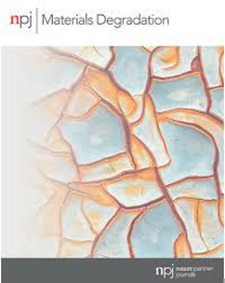Metallic coatings in offshore wind sector—a mini review
IF 7.6
2区 材料科学
Q1 MATERIALS SCIENCE, MULTIDISCIPLINARY
引用次数: 0
Abstract
Offshore wind energy is pivotal for achieving global renewable energy targets. As of 2022, 12% of global electricity is derived from wind and solar power, with an imperative to reach 90% renewable energy by 2050. The offshore wind industry, constituting 7.1% of global wind power, plays a central role in meeting these goals. The Global Wind Energy Alliance envisions reaching 380 GW by 2030 and 2000 GW by 2050. This paper addresses corrosion challenges in the offshore environment, emphasising sacrificial coatings as an effective mitigation strategy. By critically evaluating the latest revisions of widely used international standards such as Norsok M-501, ISO 12944, and VGBE-S-021, the study focuses on zinc- and aluminium-rich coatings that form a galvanic couple with steel, providing cathodic protection. Liquid coatings, thermally sprayed coatings, and hot-dip galvanised coatings are examined for their applicability with discussion on the advantages and limitations of these systems. Considerations of cost, environmental impact, and testing methods are crucial in selecting corrosion mitigation strategies. The review alludes to these requirements and highlights the significance of durable solutions, such as sacrificial coatings, in ensuring the long-term integrity of offshore wind structures amid the sector’s rapid expansion. Further collaborative research, involving industry and academia, is recommended to refine testing regimes and explore innovative coating solutions.

海上风电领域的金属涂层--小型回顾
海上风能对于实现全球可再生能源目标至关重要。截至 2022 年,全球 12% 的电力来自风能和太阳能,到 2050 年,可再生能源的比例必须达到 90%。海上风能产业占全球风力发电的 7.1%,在实现这些目标方面发挥着核心作用。全球风能联盟预计,到 2030 年,海上风力发电量将达到 380 千兆瓦,到 2050 年将达到 2000 千兆瓦。本文探讨了近海环境中的腐蚀挑战,强调牺牲涂层是一种有效的缓解策略。通过对 Norsok M-501、ISO 12944 和 VGBE-S-021 等广泛使用的国际标准的最新修订版进行严格评估,本研究重点关注与钢材形成电偶并提供阴极保护的富锌和富铝涂层。对液体涂层、热喷涂涂层和热浸镀锌涂层的适用性进行了研究,并讨论了这些系统的优势和局限性。考虑成本、环境影响和测试方法对于选择腐蚀缓解策略至关重要。综述中提到了这些要求,并强调了牺牲涂层等耐用解决方案在确保海上风电结构长期完整性方面的重要意义,因为该行业正在快速扩张。建议进一步开展由工业界和学术界共同参与的合作研究,以完善测试机制并探索创新的涂层解决方案。
本文章由计算机程序翻译,如有差异,请以英文原文为准。
求助全文
约1分钟内获得全文
求助全文
来源期刊

npj Materials Degradation
MATERIALS SCIENCE, MULTIDISCIPLINARY-
CiteScore
7.80
自引率
7.80%
发文量
86
审稿时长
6 weeks
期刊介绍:
npj Materials Degradation considers basic and applied research that explores all aspects of the degradation of metallic and non-metallic materials. The journal broadly defines ‘materials degradation’ as a reduction in the ability of a material to perform its task in-service as a result of environmental exposure.
The journal covers a broad range of topics including but not limited to:
-Degradation of metals, glasses, minerals, polymers, ceramics, cements and composites in natural and engineered environments, as a result of various stimuli
-Computational and experimental studies of degradation mechanisms and kinetics
-Characterization of degradation by traditional and emerging techniques
-New approaches and technologies for enhancing resistance to degradation
-Inspection and monitoring techniques for materials in-service, such as sensing technologies
 求助内容:
求助内容: 应助结果提醒方式:
应助结果提醒方式:


